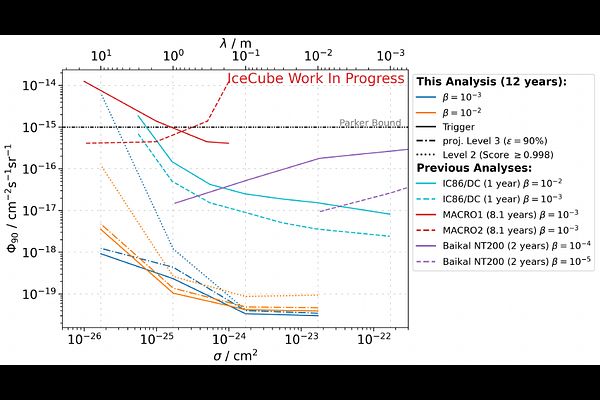Search for Sub-Relativistic Magnetic Monopoles with the IceCube Neutrino Observatory

Search for Sub-Relativistic Magnetic Monopoles with the IceCube Neutrino Observatory
Jonas Häußler for the IceCube Collaboration, Nicolas Moller for the IceCube Collaboration
AbstractMagnetic monopoles are beyond standard model particles, predicted by Grand Unified Theories (GUTs) to be created during the early universe. At typical masses of the GUT-scale - above $10^{14}$ GeV - these particles would move at sub-relativistic speeds. The Rubakov-Callan effect predicts that magnetic monopoles can catalyze nucleon decays, in particular the decay of protons. This results in a unique signature of small particle cascades along the trajectory of the slow moving magnetic monopole. Since 2012, a dedicated Slow-Particle Filter has been implemented in the IceCube Neutrino Observatory for the detection of magnetic monopoles. Current limits set an upper bound for the monopole flux at $\Phi_{\mathrm{90}}\leq 10^{-17}$ to $10^{-18} \mathrm{cm}^{-2}\mathrm{s}^{-1}\mathrm{sr}^{-1}$ depending on the catalysis cross section for the proton decay. A detection of the monopole flux thus requires exceptional background rejection and signal efficiency. This is accomplished using machine learning methods. In this analysis, we use a multi-level boosted decision tree classifier. We present the strategy behind the background and signal simulation, the classification efficiency, and IceCube's projected sensitivity for the detection of sub-relativistic magnetic monopoles.